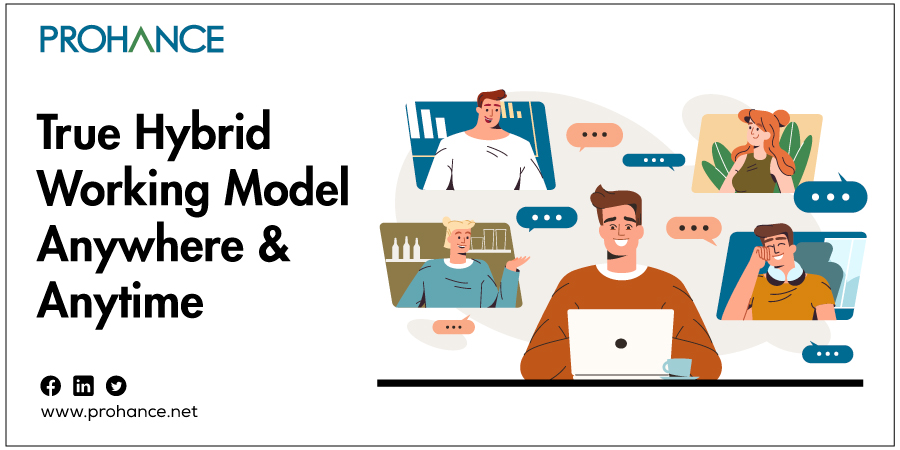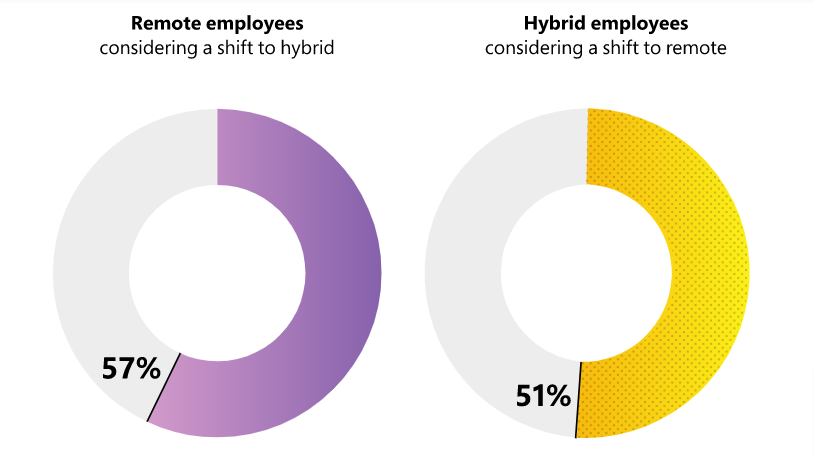Hybrid Working Model is Here to Stay – Doing Hybrid Right!

Table of contents
The Ultimate Guide to Hybrid Work
After the severe disruptions caused by the pandemic during the past 2-3 years.
One thing is certain about the future of work: hybrid work arrangements will likely become the standard for many firms, in sectors ranging from tech to pharmaceuticals to academia, at least in the short term and maybe for much longer.

Employers extended their work-from-home arrangements indefinitely through another dreadful pandemic winter and the anticipated mass migration back to the office in September 2021. Employers and employees are once more getting ready for their new work environment as spring approaches. There are valid reasons why many businesses and employees are enthusiastic about this combination of on-site and remote work, and there are also valid reasons why many people are wary of the change.
Returning to work signifies some form of normalcy for many employees, or at the very least, a workplace more akin to the one we remember from before the outbreak. Others find it difficult to imagine giving up working in their pyjamas and the excellent coffee they make in their kitchens.
What is the hybrid work model?
A flexible work arrangement known as hybrid work allows employees to work both on-site and remotely, either from their homes or another location.
According to a study by Accenture, 58% of respondents were already utilizing hybrid working arrangements during COVID-19. Compared to those who worked solely on-site or remotely, these individuals reported greater mental health, stronger professional connections, and lower levels of burnout. A hybrid work style, according to 83% of respondents, would be the most beneficial in the future.
Depending on the company and the sort of work being done, the hybrid work paradigm can take on numerous shapes.
Flexible hybrid work model
Depending on their daily priorities, employees decide where and when to work. For instance, people can decide to work from home or in a coffee shop if they need to spend some time concentrating on a project. They have the option of going into the office if they desire a sense of community, need to meet with their team, need to attend training, or want to participate in a town hall.
Fixed hybrid work model
The company determines which days and times its workers may work from home or visit the office. As an illustration, it’s possible that certain teams report to work on Mondays and Wednesdays while others report on Tuesdays and Thursdays. Or an organization might permit everyone to work remotely on specific days of the week.
Office-first hybrid work model
Although it is expected that workers be present, they are free to select a few days each week to work remotely.
Remote-first hybrid work model
With sporadic trips to coworking spaces or the office for team building, collaboration, and training, employees work remotely the majority of the time. According to this approach, the business may not have an office and instead relies on team members who work nearby to gather together as needed.
Benefits of a hybrid work model
The transition to hybrid employment has a positive impact on the environment, businesses, and employees. It promises to boost employees’ productivity, flexibility, and job satisfaction. It boosts the company’s financial performance and widens its talent pool. Additionally, less travel and use of office space results in a more sustainable future.
Accredit employee flexibility.
A mix of high-quality technology, a functional workspace, and a policy that prioritizes people’s needs, wants, and well-being in decision-making is needed to enable employee flexibility.
Create a collaborative culture.
Create a sense of community so that everyone, regardless of whether they want to work remotely, in an office, or on-site, feels valued, supported, and committed to the same objectives.
Engage in two-way communication through continuous feedback.
The data will help the organization determine where your approach is working and where it isn’t, and you’ll be able to take quick action to close gaps and solve issues.
Dimensional Research’s most recent study reveals:
- One hundred ninety percent of knowledge workers see the advantages of working from homes, such as greater flexibility, no commuting time, and more time for socializing with friends and family.
- 95% of knowledge workers desire to return to the workplace for tasks like teamwork, cooperation, and peer interaction.
- 53% of large companies intend to reduce the size of their offices, which will result in cost savings.
Do employees want the hybrid work model?
Most individuals want to continue doing hybrid work after the epidemic, according to surveys like this one from Microsoft’s Work Trend Index 2022:
– 
CREDIT: Image from Microsoft.com
These results are corroborated by a second McKinsey survey, which found that 57% of employee respondents preferred a hybrid model.



